The world needs musicians now more than ever.
Longy School of Music of Bard College
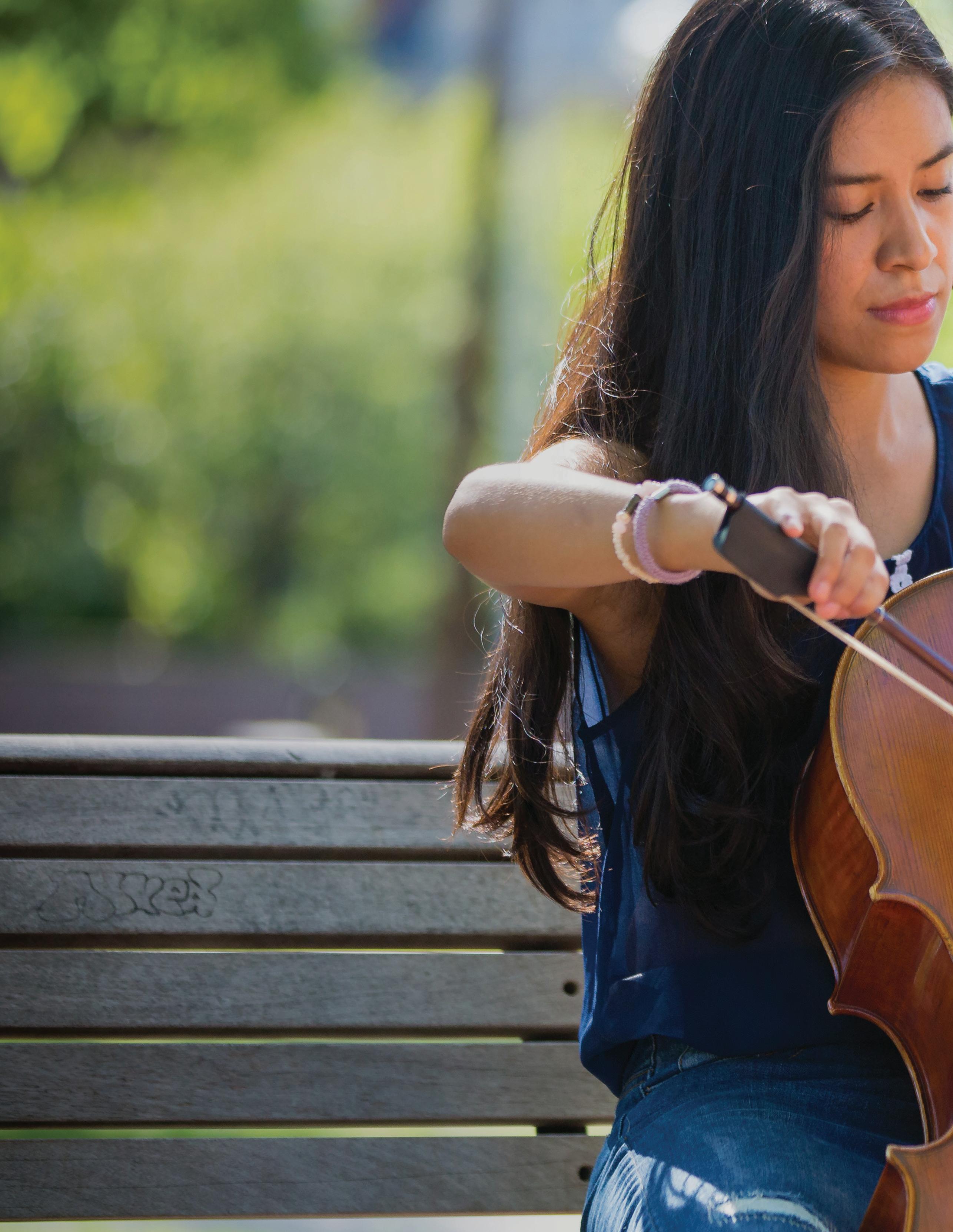
It immediately sparked my imagination. When I became President of Longy in 2007, I couldn’t wait to continue exploring all the roles musicians might play in the world, and all the needs that could be addressed through music conservatory training.
At Longy, we’ve wrestled with these ideas every day. Here are a few of the things we now know:
• There are countless ways for musicians to make a difference. We’re still just scratching the surface.
• Students are hungry for this type of training. They want more meaningful experiences with music. They want an education that prepares them to work with big ideas and address big issues.
• We reimagined conservatory education. We’ve made enormous changes in the way we recruit, audition, train, and nurture students. We continue to transform our programs in unique and striking ways.
Access is one of the most important themes of our transformation. From my own personal experience as a child raised in rural Wisconsin and not from affluent means, I know how lucky I was to have parents and angel supporters along the way who nurtured my love of music and piano studies. They saw my potential, and I was gifted access. My personal mission as a leader at Longy is to eliminate as many barriers as possible, ensuring more access to students who are passionate about making a difference through music.
I invite you to get to know this remarkable organization. I know you’ll be as inspired as I am every day by the passion and ingenuity of our students, alumni, faculty, and staff as we work to transform the field of music education and as we empower our students to make their music matter.
Karen Zorn President, Longy School of Music of Bard College

I was inspired when I first came across Longy’s newly adopted mission—“to prepare musicians to make a difference in the world.”

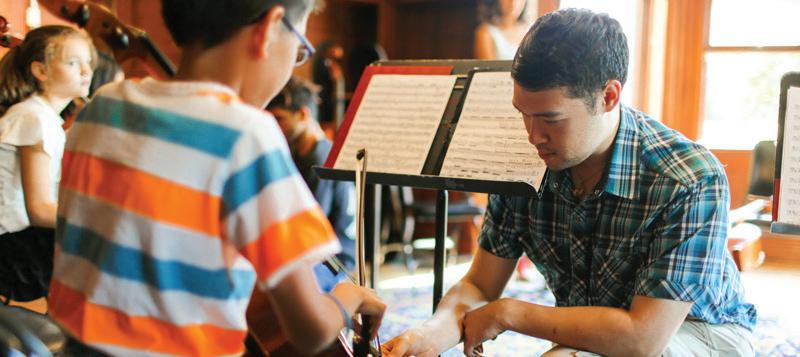
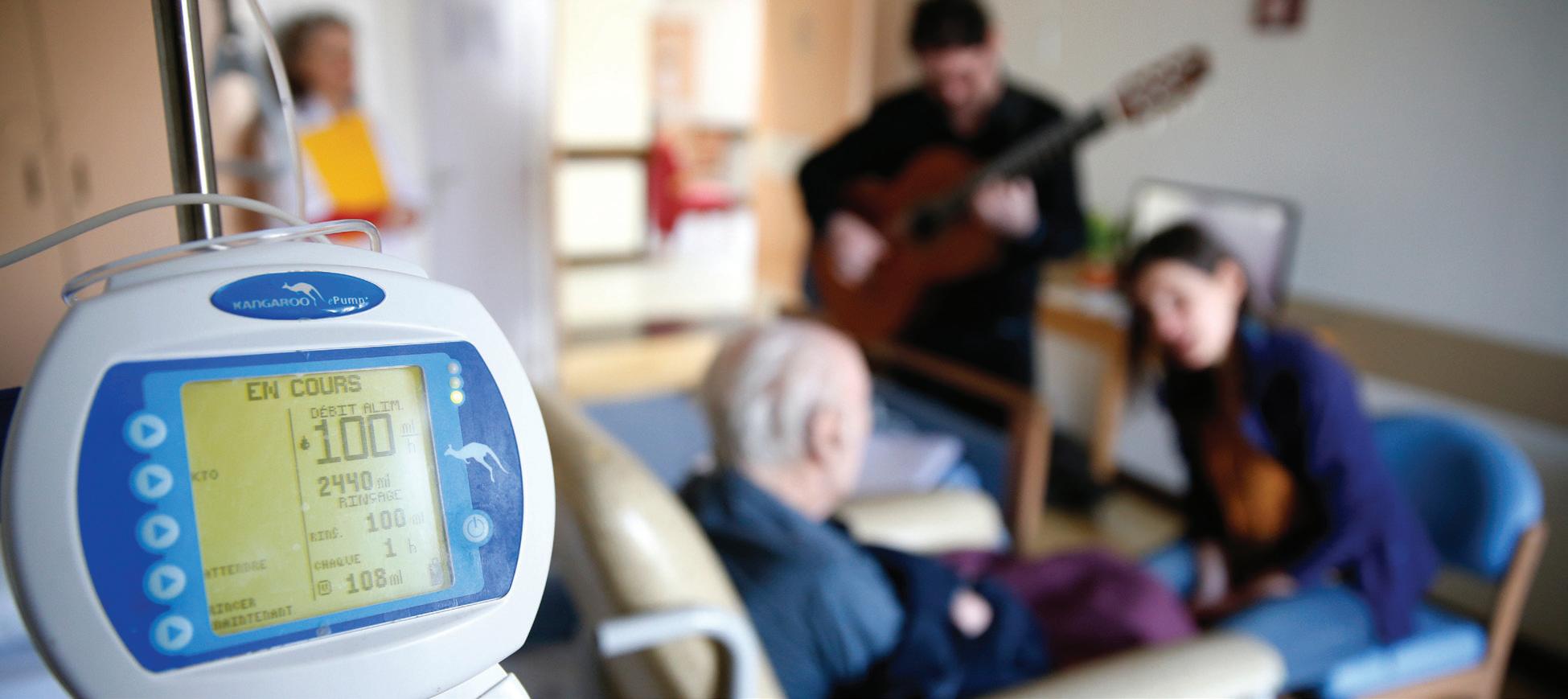
Music as Social Change
Making music is a kind of superpower.
As performers
Musicians can inspire joy, provoke conversation, express the unspoken, comfort the vulnerable, and knit people together in a powerful, collective human experience.
As teachers
Musicians can help students build self-esteem, improve emotional development, inspire imagination, enhance intellectual curiosity, learn teamwork, and attain a sense of accomplishment.
This has been our central question at Longy: How might musicians employ their extraordinary superpowers to address the needs of the world?
4
How can musicians make a difference?
Here are just a few of the hundreds of ways our students are answering this question.
Engaging communities in need
Roy Lewis was inspired by the Lullaby Project. Initiated by Carnegie Hall’s Weill Music Institute, the program pairs new and expecting parents and caregivers with professional artists to write and sing personal lullabies for their babies, aiding parental health and strengthening the parent-child bond. Hoping to create a similar impact at Longy, Roy found the perfect partner in Horizons for Homeless Children in Boston.
Roy proposed a class for Longy students that culminated in a four-week field experience during which Longy musicians would work with Horizon parents to help write and record a unique lullaby for their children.
“It was incredible to hear each parent’s story seeing the connections formed over four weeks between Horizon parents and Longy students was a beautiful thing.”
5 Our Approach Our Vision Access Our Programs
Making music accessible to every child
Gabrielle Molina always dreamed of becoming the principal clarinet in an orchestra. Those aspirations changed when she saw a TED Talk about El Sistema, the Venezuelan program that uses intensive music education to create opportunity, connection, and safe spaces for children in under-resourced neighborhoods. After graduating from Longy’s Master of Arts in Teaching program, Gabrielle founded Teaching Artists International, a non-profit that connects musicians with socially based music programs around the world. “I had spent so many years in the practice room trying to perfect excerpts and my legato. And I was trying to figure out how these things intersect in making the world a better place…when I found the program (at Longy), I felt that I was finally finding a group of like-minded individuals who were also questioning their role in society as musicians.”
Bringing the healing power of music to the NICU
When Job Salazar Fonseca began studying to become a therapeutic musician at Longy, he never dreamed that his first patient would be his own son. Askel was born prematurely at 32 weeks. During his first weeks of life, he had trouble breathing and eating. The staff in the Neonatal Intensive Care Unit was skeptical at first when Job asked if he could bring his violin to play. But as his music filled the NICU, the nurses soon surrounded him with all the babies, who gradually stopped crying. It wasn’t long before Askel began to breathe and eat on his own.
“I realized that music is not just an art form, but a powerful force that can provide an environment of healing.”
6
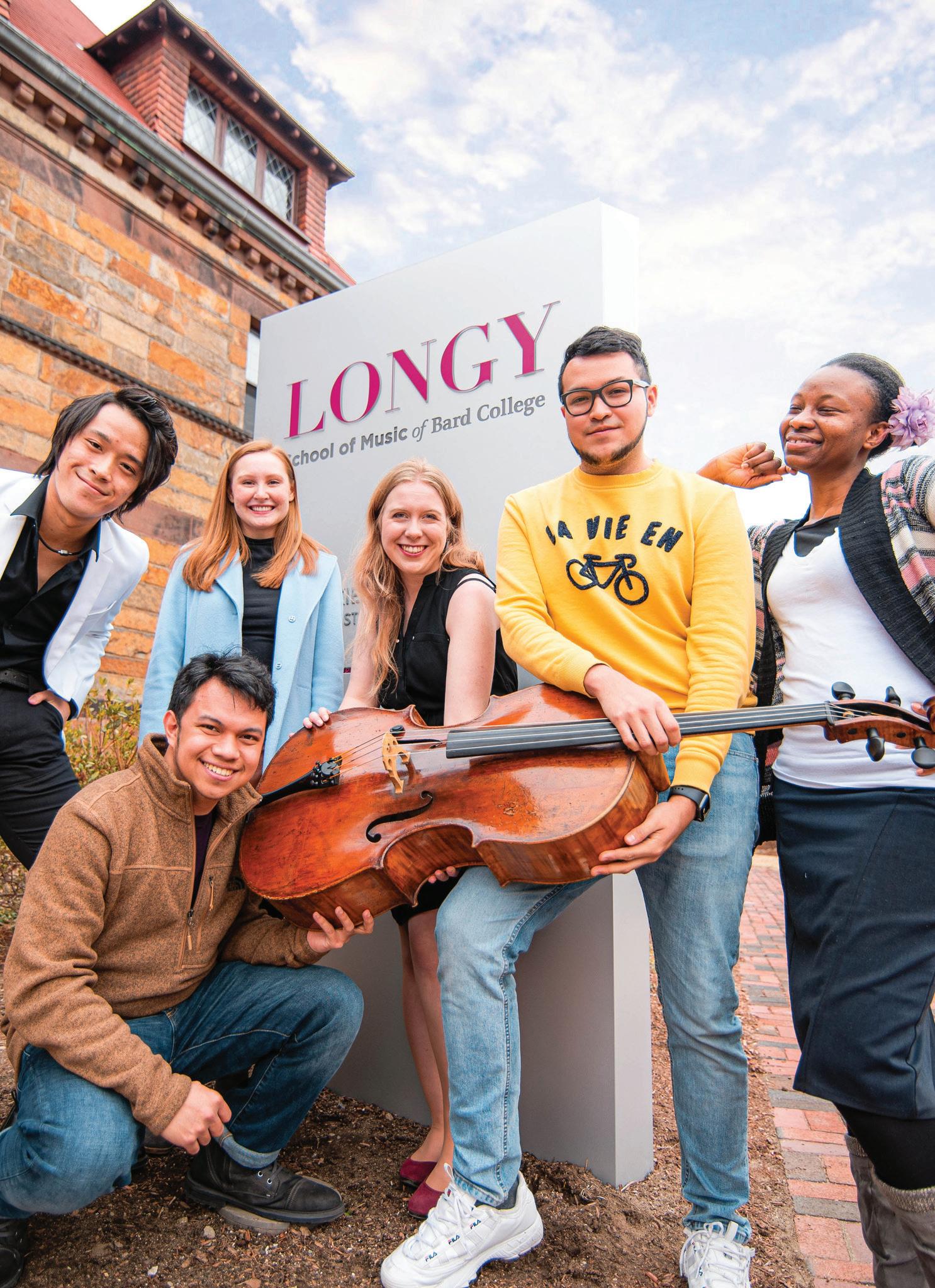
Transforming Music Education
changed the way we recruit, audition, teach, and nurture musicians.
Training more musicians
We’re not in the business of saying who can and cannot be a musician. The world needs more musicians, not fewer. There is a plethora of important work to do. Our alumni will go on to perform on the world’s stages, start music programs in under-resourced neighborhoods, bring healing to patients in hospitals, and make meaningful connections with individuals in marginalized communities.
Encouraging intrinsic motivation
We’ve noticed that music training traditionally starts early in life. Students often find their motivation outside of themselves (e.g., from their teachers). We disrupt this dynamic by reigniting each student’s own intrinsic motivation, empowering them to dream big, overcome obstacles, and explore who they are as artists. Our intensive career and life-coaching process helps students imagine a career based on what matters to them and the difference they want to make.
We’ve radically
10
As an undergraduate, Janet Lagah-Bona realized that she was more invested in composing her own music than in performing the works of others. Though she did not have traditional training as a composer, Janet was admitted to Longy because of her passion, potential, and drive to become the musician the world needed her to be. At Longy, she found teachers who helped her discover her own voice while opening the door to a world of knowledge about her heritage— including musicians and traditions that have long been ignored by traditional music education. “I felt like I could try totally new things I had never imagined before. At Longy, I figured out who I am as a composer. Now I can pay homage to where I’ve come from and my own cultural background. I’m adding to the tapestry of culture and history in my own way as a musician, an artist, and a creator.”
12

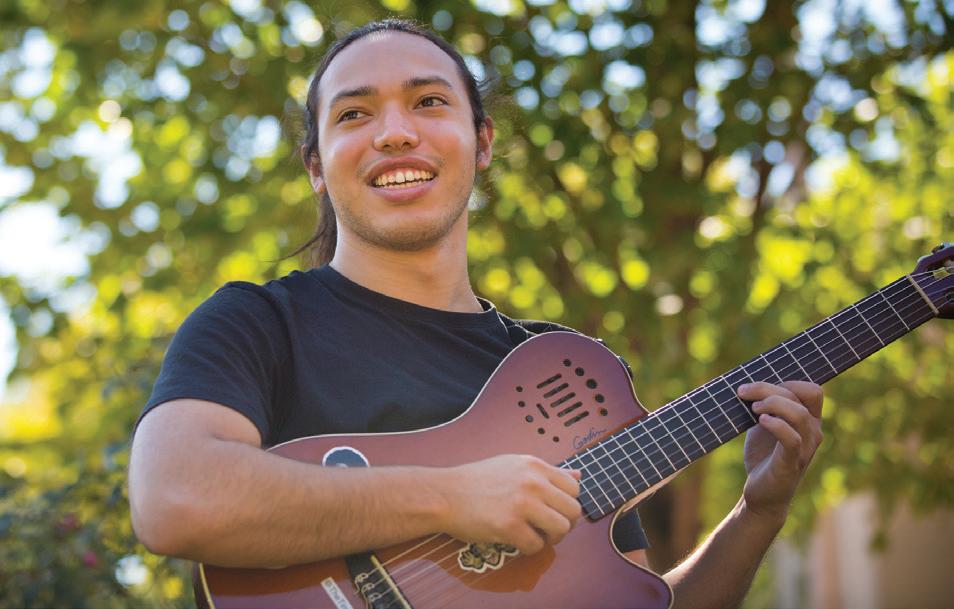
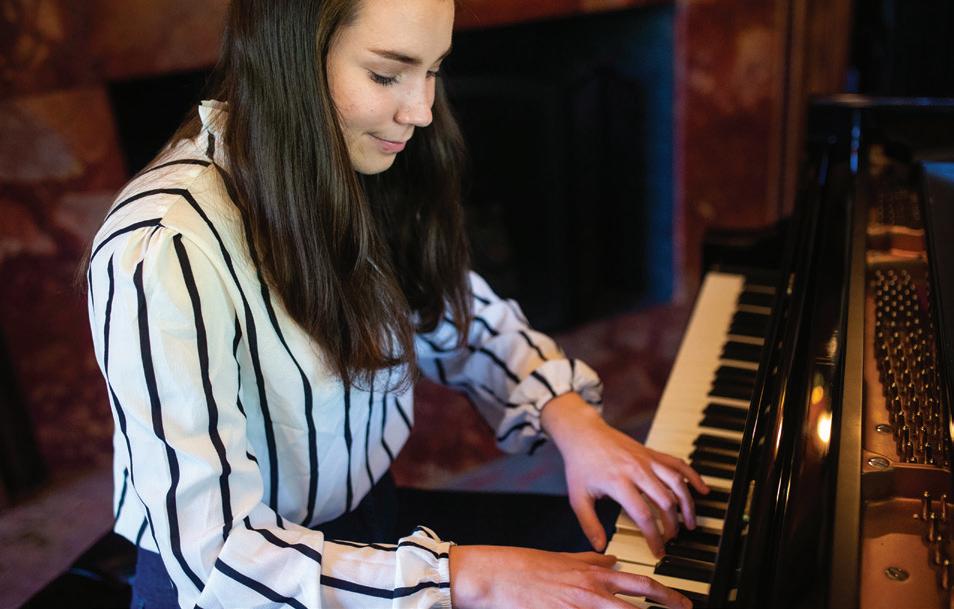

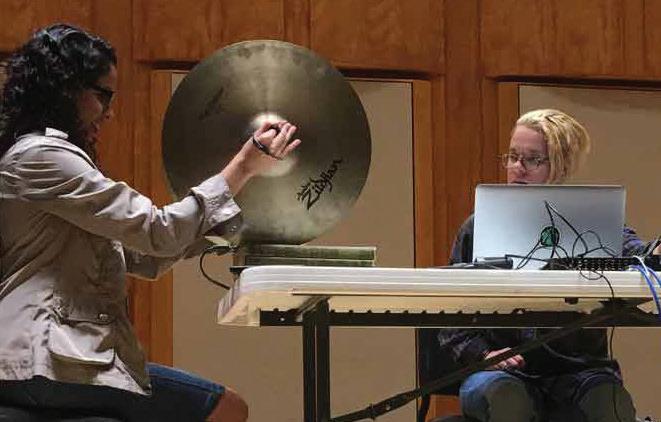
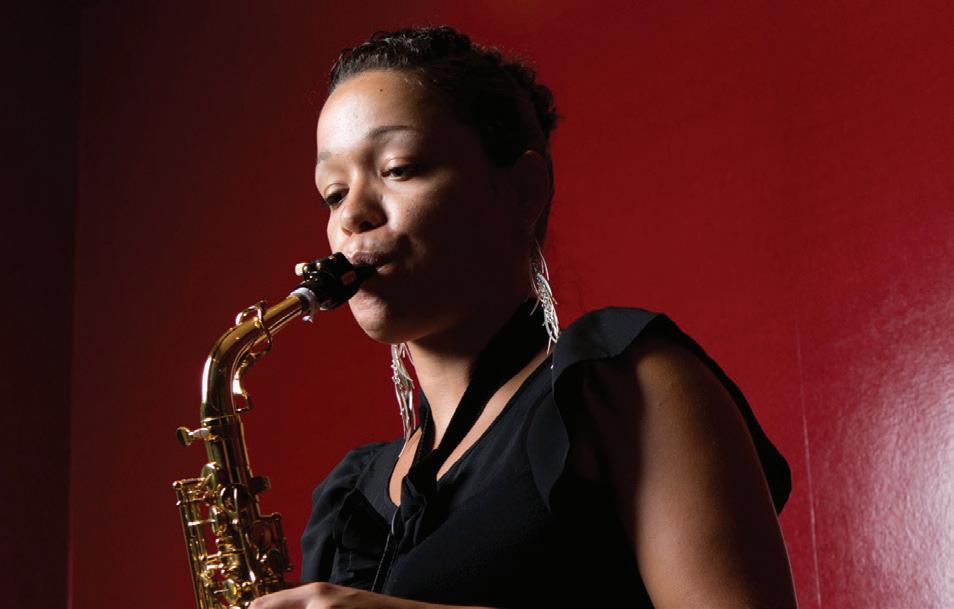
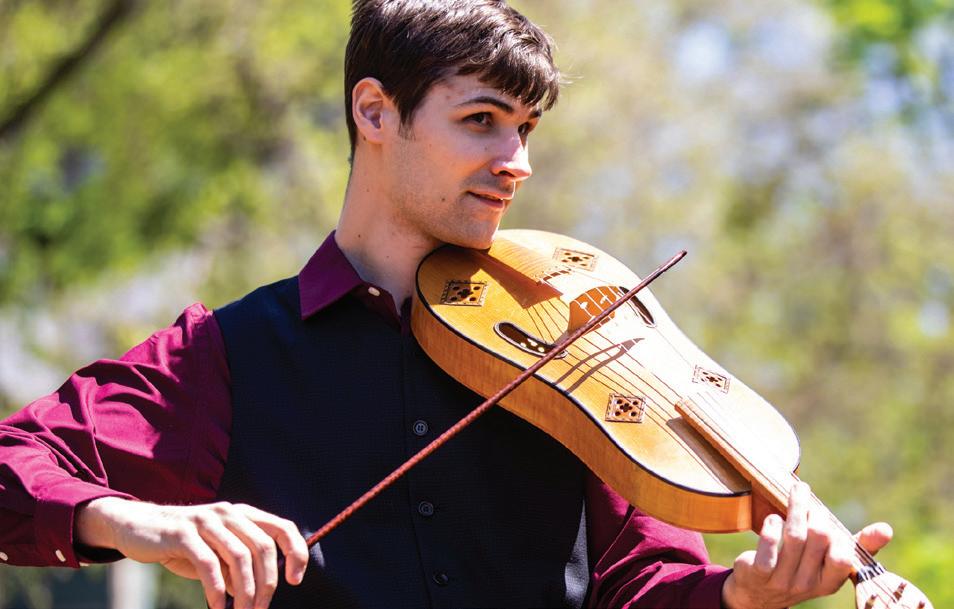
Welcoming All Music-Makers, All Music-Making
Arson Fahim dreamed of a life in music. Music wasn’t just a passion—it felt like his reason for living. But as a citizen of Afghanistan—where the average family earns roughly $1,000 per year—he doubted his dream would become a reality. He knew that even if he was accepted at a conservatory, his family would never be able to afford it. That’s why, while he was excited to be accepted at Longy, he was absolutely ecstatic when he realized he had been granted a full scholarship for his studies. Arson arrived at Longy two weeks before the fall of Kabul in 2021— and before the Taliban seized the only school of music in Afghanistan, from which Arson had graduated. “I know firsthand the importance of access and opportunity—how it gives one the audacity to have dreams. That’s what Longy has done for me.”
18
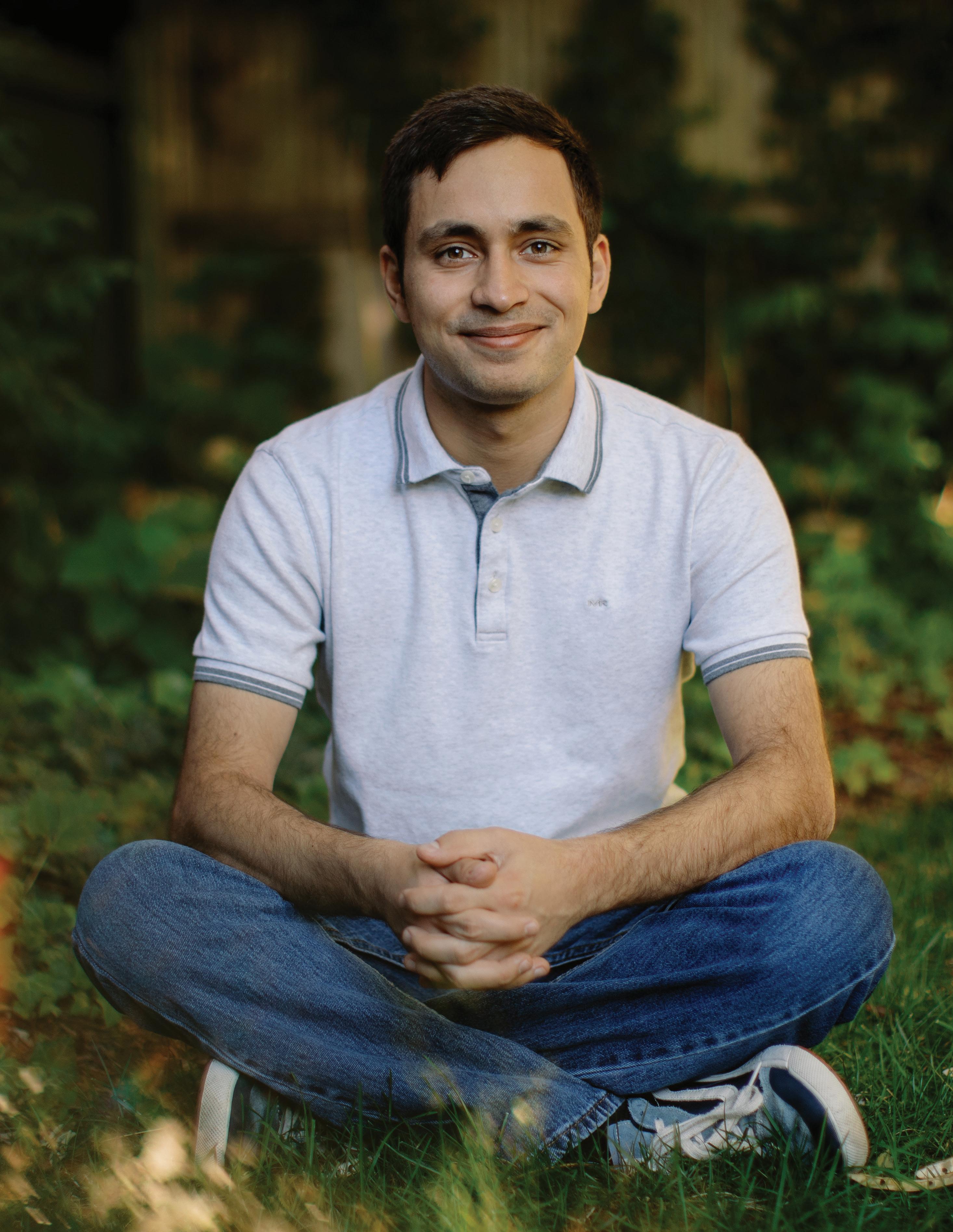
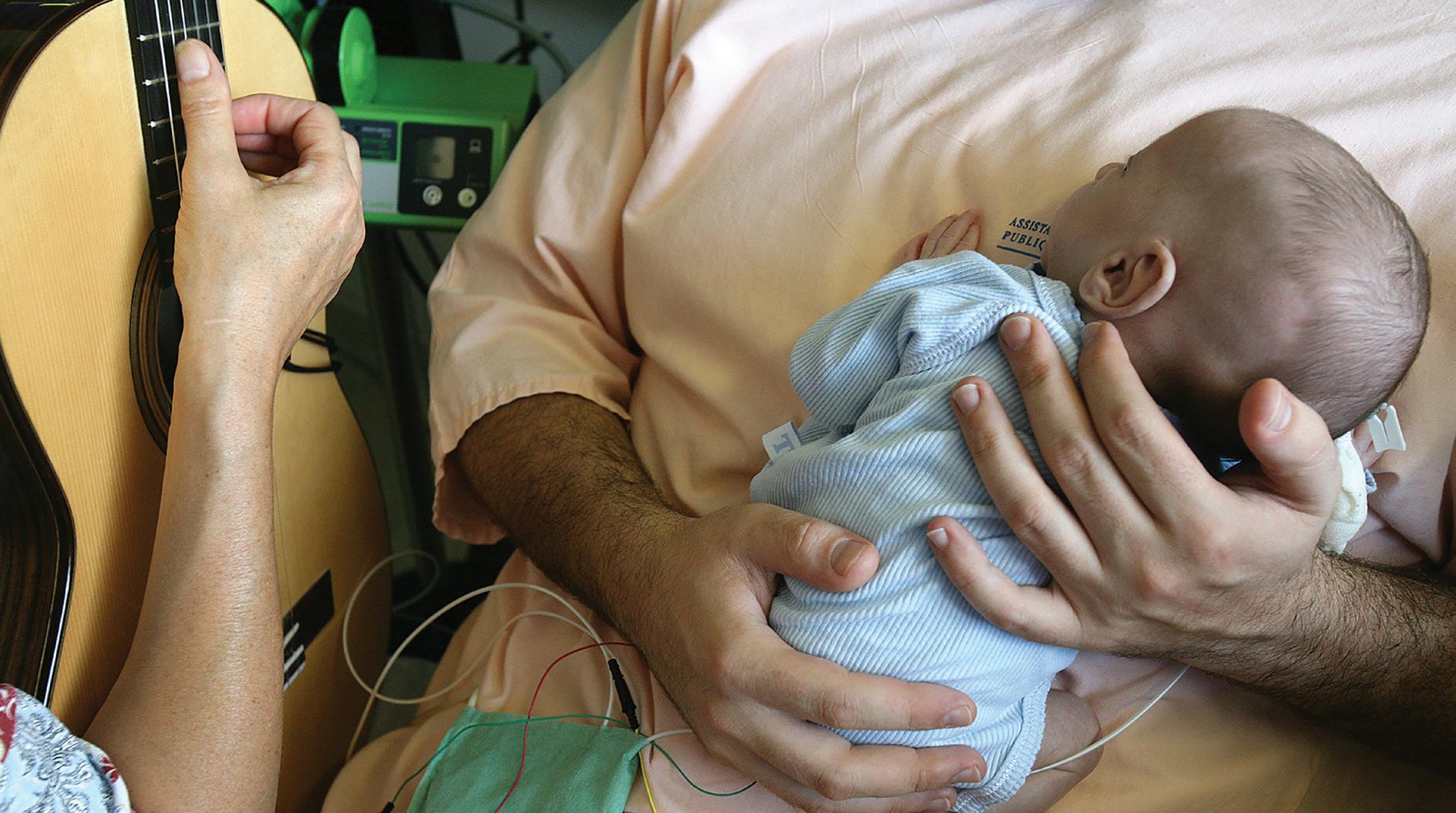
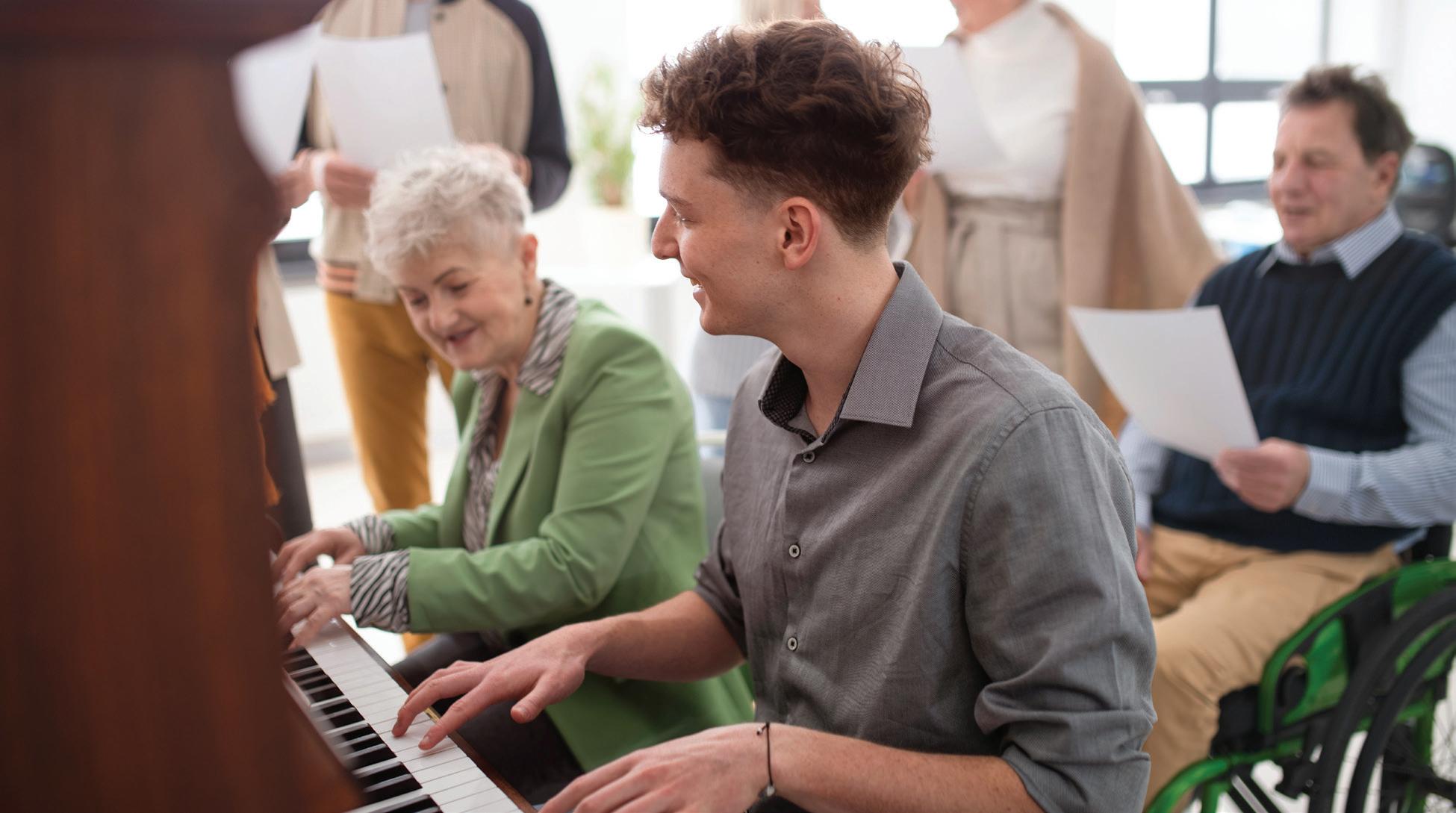
Music as a Healing Art Initiative
Music can address an array of physical, emotional, and mental conditions.
For example, therapeutic music can help to:
• Stabilize heart rate, blood pressure, and respiration rates.
• Minimize stress and have a calm, stabilizing influence.
• Increase production of endorphins and decrease pain.
• Bolster the immune system.
• Provide comfort at end of life.
Scientific studies reinforce what humans have known for centuries: music has a healing effect.
22
Longy's training provides students with the tools they need to create an environment that is conducive to healing. This initiative reshapes students' views on what a performance can be.
Our Music as a Healing Art Initiative encompasses:
• Courses that introduce students to the art and science of therapeutic music, focusing on elderly and vulnerable populations.
• Scholarships for students to become Certified Music Practitioners, a growing career field of complementary medicine.
• Research into the clinical effects of therapeutic music.
23 Our Approach Access Our Programs Our Vision
DeShaun Gordon-King envisioned playing in orchestras or gaining international fame as a flute soloist. After participating in Longy’s Music as a Healing Art Initiative, he realized that using music to make a healing environment perfectly combined his spirituality, his love of storytelling, and his passion for music. The recognition he once sought as a performer seemed to pale in comparison to the difference he could make as a therapeutic music practitioner. “I’m okay with not pursuing these international competitions or these orchestral auditions because, at the end of the day, I know my music will be having a powerful impact on people—and that’s the most important thing for me.”
24


Preparing Teachers to Make a Difference
Music has the potential to change students’ lives in profound ways. Interactions with passionate and supportive teachers can have a lasting impact on children.
Using Longy’s teaching philosophy, our alumni are working in schools and El Sistema and other community music programs, where their work is guided by:
Longy believes that musicians who hone their craft as artists build a foundation to become effective teachers.
28
Culturally responsive engagement
People learn most effectively when education builds on what they already know: their culture, language, beliefs, and life experiences. Culturally responsive teaching connects learning to these aspects of a student’s life. In lessons, classes, conversations, and performances, culturally responsive engagement increases understanding, enhances confidence, and raises expectations for the ability to learn.
Resource-based learning
Rather than waiting for the ideal set of resources—the right space, materials, and instruments—Longy musicians are trained to use whatever resources they have at hand to connect with students and audiences.
A growth mindset
Teachers with a growth mindset believe that intelligence and talent can be developed through effort and persistence. Longy musicians learn to support every student as they strive to grow and improve.
29
Approach Access
Programs
Vision
Our
Our
Our
Our in-person degree
Immediate experience in underserved communities
Longy’s Master of Music in Music Education is rooted in socially engaged teaching practices. Longy students work toward their Massachusetts teaching license while exploring culturally responsive pedagogy and gaining vital in-person experience at local music programs, El-Sistema inspired sites, and public schools in the greater Boston area.
30
Our online degree
Making teacher training accessible worldwide
To enable more musicians worldwide to become teachers, Longy has launched an online Master of Music in Music Education program that is available to anyone, anywhere. The program allows musicians to complete their degrees in as little as one year. The online degree is designed to be accessible and affordable through its asynchronous content that allows students to remain employed at their current job.
31 Our Approach Access Our Programs Our Vision
Ivan Shiu grew up in a musical family in Hong Kong and wanted to become a music teacher. But as an international student and a person of color studying in the U.S., he often felt unseen and misrepresented by his teachers—his perspective and contributions didn’t seem to matter. Determined to become the kind of teacher who could ignite a student’s passion for music rather than dampen it, Ivan enrolled in Longy’s music education program, which emphasizes culturally responsive teaching that values and builds on each student’s life experiences. He now teaches in a public school system committed to engaging its highly diverse student body with this same teaching philosophy. “Longy helped me figure out how to be my authentic self in the classroom, with students who often feel unseen as I once did.”
32


Longy’s Side-by-Side Program
Longy’s Side-by-Side Program is inspired by the Venezuelan social movement El Sistema, which addresses issues of social justice by making intensive musical training accessible to every child.
36
During intensive rehearsals, children ages 6–18 literally sit side-by-side with their Longy mentors, sharing a music stand as they work together to create extraordinary orchestral performances.
For musicians enrolled in our Master of Music in Music Education program, the Side-by-Side orchestra offers access to a real-world lab where they can practice and refine their teaching skills. They gain firsthand experience with culturally responsive engagement and resource-based learning. Many of our graduates are hired right out of school as faculty in El Sistema-inspired programs and K–12 schools.
This yearlong initiative pairs Longy graduate students with children from local schools and El Sistema-inspired programs across Massachusetts.
37
Approach Access
Programs
Vision
Our
Our
Our
Children in the Side-by-Side program receive top-quality orchestral training led by internationally recognized faculty, combined with private and small-group instruction from Longy musicians.
These young musicians have performed in exceptional venues such as the Walt Disney Concert Hall with famous artists including:
• Gustavo Dudamel, Music Director of the LA Phil;
• Vijay Gupta, MacArthur Fellow, social justice activist, and Executive and Artistic Director of Street Symphony;
• Thomas Wilkins, Germeshausen Youth and Family Concerts Conductor and Artistic and Education Community Advisor at the BSO;
• and José Antonio Abreu, the founder of El Sistema.
38
39 Our Approach Access Our Programs Our Vision
The program addresses a pressing need for high-quality music education for children who may not otherwise have access.
Featured Students and Alumni
• Roy Lewis , MM Jazz and Contemporary Music, Trumpet The Cambridge Homes Certified Music Practitioner Scholar
• Gabrielle Molina , MAT
• Job Salazar Fonseca , GPD Historical Performance, Baroque Violin
Lindsay and Garth Greimann Scholar and The Cambridge Homes Certified Music Practitioner Scholar
• Janet Lagah-Bona , MM Composition, Piano
Alabama State University Equity Scholar
• Arson Fahim , UD Composition
Lindsay and Garth Greimann Equity Scholar
• DeShaun Gordon-King , GPD, Flute
Emily Fisher Equity Scholar and Loring and Louise Conant Certified Music Practitioner Scholar
• Ivan Shiu , MM/ME, Voice
Margot Kittredge Memorial Scholar
Photo Credits
• Cover © Robert Torres
• p. 1 © Robert Torres
• p. 2 top to bottom: © Longy archives, Luke Zvara, iStockPhotos
• p. 8 © Yazi Ferrufino
• p. 13 © Adriana Arguijo Gutierrez
• p. 14 left to right, top to bottom: © Robert Torres, Robert Torres, Longy Archives, Yazi Ferrufino, Robert Torres, Longy Archives
• p. 19 © Adriana Arguijo Gutierrez
• p. 20 top to bottom © Adobe Stock, iStockPhotos
• p. 25 © Adriana Arguijo Gutierrez
• p. 26 © iStockPhotos
• p. 33 © Adriana Arguijo Gutierrez
• p. 34 © Longy Archives
40
27 Garden Street Cambridge, MA 02138 617.876.0956 longy.edu





















